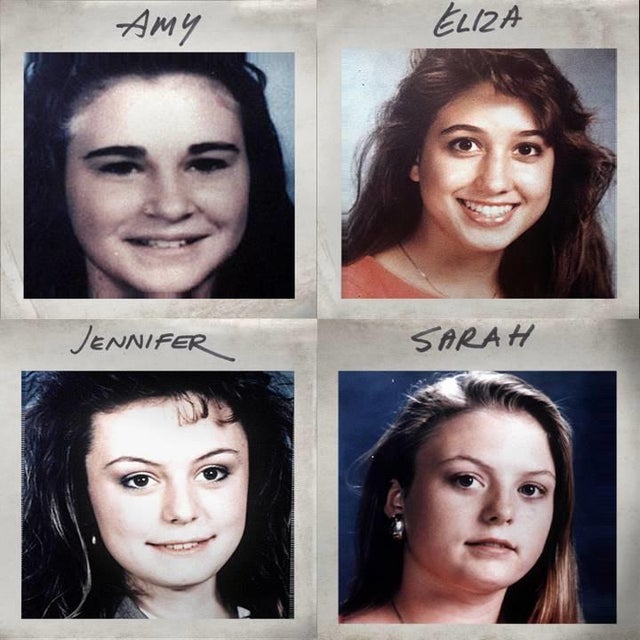Case Update on the Gripping Yogurt Shop Murders
Updated: September 26, 2025
In a shocking turn of events regarding the infamous Yogurt Shop Murders in Austin, Texas, a former investigator revealed to “48 Hours” correspondent Erin Moriarty that deceased serial killer and rapist Robert Eugene Brashers has been named as a suspect in the notorious case. The tragic incident, which claimed the lives of four teenage girls in 1991, continues to haunt a community still searching for justice over three decades later.
A Tragic Crime Scene
The horrific scene unfolded on December 6, 1991, when 17-year-old Eliza Thomas, 13-year-old Amy Ayers, and two sisters, 17-year-old Jennifer Harbison and 15-year-old Sarah Harbison, were discovered in a local I Can’t Believe It’s Yogurt! establishment. The girls had been bound, gagged, and shot in the head, while the assailants had also set the shop ablaze, destroying much crucial evidence.
Eliza and Jennifer were working when their friends Sarah and Amy arrived as they were preparing to close the shop. Investigators speculated that at least two men were involved in this brutal act, as the differing gunshot wounds suggested the use of more than one type of firearm. However, the extensive fire compromised the evidence further complicating matters for law enforcement.
Initial Investigations and Suspects
In the aftermath, the Austin Police Department assembled a dedicated task force to tackle the cold case. By 1999, attention shifted to four teenage suspects—Robert Springsteen, Michael Scott, Maurice Pierce, and Forrest Welborn—who were arrested and charged, even though they had initially been released due to insufficient evidence. The case took an unexpected turn with the confessions from Springsteen and Scott, which they later recanted, alleging coercion.
A trial ensued for Springsteen and Scott, but their confessions were problematic as they contradicted the Sixth Amendment’s right to confront accusers. Their convictions were eventually overturned, leading to a significant turning point in the investigation when the DNA testing revealed another potential suspect.
DNA Breakthrough and Ongoing Investigations
In an effort to revisit the case with new technology, investigators employed Y-STR testing, aimed at isolating male DNA from the victims. A partial male DNA profile was identified, yet this sample did not match the original group of suspects. Despite attempts to trace the origin of this DNA, the results led to a frustrating standstill by 2009 when charges against Springsteen and Scott were finally dropped.
Hope was rekindled in 2017 when an Austin police investigator found a match within a public DNA database. However, this promising lead proved hollow when the sample was linked to an anonymous FBI submission, stymying further identification due to privacy constraints. U.S. Congressman Michael McCaul took it upon himself to advocate for more rigorous investigative measures.
A Legislative Push for Justice
By early 2020, the FBI collaborated with local authorities to revisit the DNA evidence, enhancing the original genetic material collected at the crime scene. Unfortunately, this advanced testing yielded less favorable results, further excluding the earlier sample from being a viable lead.
Not one to back down, Congressman McCaul reported, “We’re committed to pursuing the identity of the male DNA left at the scene.” He emphasized the importance of ongoing research in DNA science to uncover and potentially resolve this chilling case.
Victims of the Yogurt Shop Murders
| Name | Age | Role |
|---|---|---|
| Eliza Thomas | 17 | Employee |
| Amy Ayers | 13 | Friend |
| Jennifer Harbison | 17 | Employee |
| Sarah Harbison | 15 | Sister |
As we await advancements in DNA science, there remains a glimmer of hope that one day the evidence gathered from the tragic night over 30 years ago will lead to closure for the victims’ families and a resolution to this painful chapter in Austin’s history.


